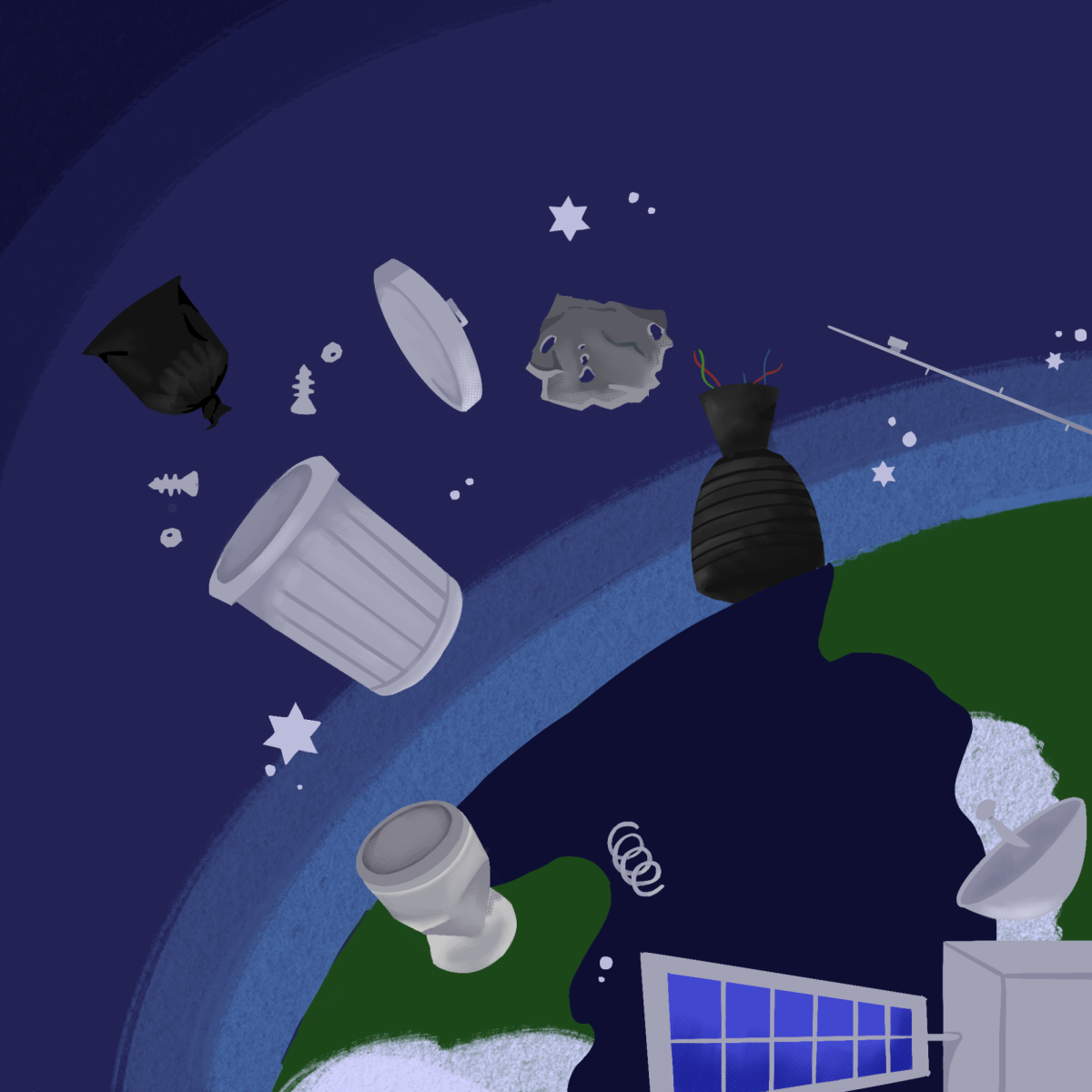In 2021, a fragment of space debris, only a few centimeters wide, collided with the International Space Station’s robotic arm and punctured it. According to NASA, the incident highlights the dangers posed by over 100 million pieces of space junk orbiting Earth. The problem has worsened over time due to the dramatic increase in satellite launches and the lack of proactive debris management in the early decades of space exploration. As satellites support essential services like GPS, communication and weather forecasting, their increasing vulnerability to debris jeopardizes critical infrastructure and scientific progress.
Every collision in orbit creates more fragments, compounding the risk of a cascading effect known as “Kessler Syndrome.” According to researchers Donald Kessler and Burton Cour-Palais, the Kessler Syndrome is when the density of debris in orbit reaches a critical point, triggering a chain reaction of collisions that exponentially increases the amount of space debris.
The growing number of satellites, especially from private companies like SpaceX, exacerbates the problem, as noted by the European Space Agency. Without action, low Earth orbit could become too cluttered for space exploration and satellite deployment.
Current regulatory measures, like NASA’s debris guidelines, are voluntary and poorly enforced. According to space policy expert Brian Weeden, many companies prioritize cost savings and rapid deployment over compliance, which leads to the accumulation of debris and an increasingly dangerous orbital environment. The guidelines primarily focus on mitigating future debris creation, such as requiring satellites to deorbit within 25 years, but they fail to address the existing debris already posing a threat.
While initiatives like satellite deorbiting and tracking systems exist, they only reduce the risk of future collisions and enhance situational awareness, leaving the cleanup of existing debris largely unaddressed. A comprehensive approach, including enforceable international policies and significant investment in debris removal technologies is critical. Astroscale, a space research company, has made advancements in capturing and removing defunct satellites, but more widespread implementation is needed to make a meaningful impact.
Failure to act has dire consequences because industries rely on satellites for telecommunications and agriculture, which could face significant disruptions. Moreover, according to the UN Office for Outer Space Affairs, the loss of usable orbital zones could delay or halt ambitious projects like Mars exploration and lunar bases. Protecting space is a moral imperative to preserve opportunities for future generations.
Addressing the space debris crisis requires collective political will, robust international collaboration and public awareness. We need to enforce stricter policies and fund innovative solutions, such as mandatory satellite deorbiting timelines, penalties for non-compliance and funding innovative solutions to protect outer space. Immediate action ensures space remains accessible for discovery and advancement, securing its promise for generations to come.


